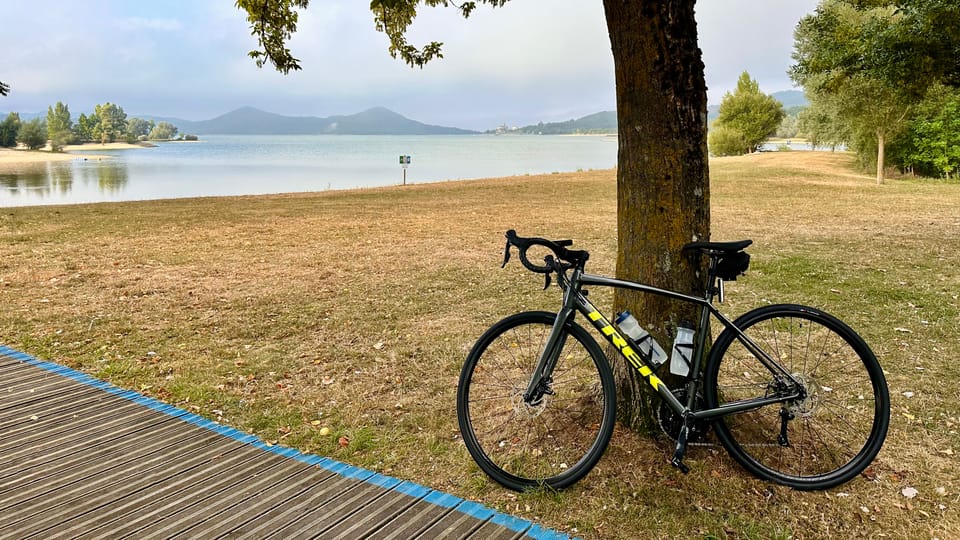Dogfooding, or when cycling counts as work

This morning, while cycling with Patricia to test a new FitWoody feature, I thought: “How lucky to have an excuse to do this during working hours”.
Part of me laughed. But another part, more honest, realized it wasn’t just a joke. Because in reality, we were doing exactly what we should be doing: living the experience we’re designing. First-hand. No filters. No “demo mode”.
And that, at a time when the way we build apps is being automated at breakneck speed, might be the most important thing we can do.
A compass in the era of AI Agents
Just a quick scroll through Twitter is enough to realize we’re on the verge of fully delegating the building of our software products to AI agents.
What used to take weeks to build can now be done in just a couple of days with a good prompt and some supervision.
It’s not that the rules are changing, we’re playing an entirely different game.
If we can all build the same things, just as quickly, what makes the difference isn’t how you build, but what you choose to build, why you build it, and who you’re building it for.
There’s no need to row anymore, what matters is choosing where the boat should go.
For that, there’s nothing like empathy. Understanding users’ needs, their daily jobs to be done, their motivations, their short and long-term aspirations.
We often say empathy is built through interviews, moderated tests, usage metrics. And sure, all of that helps. But it’s also cold. Measured. Sometimes disconnected from the real-life context where things actually happen.
There’s a kind of empathy that doesn’t show up in dashboards or reports: the empathy that’s born when you live the user’s journey yourself. When you feel friction in your fingers, when you get frustrated because you can’t find something, when you smile because something just works.
No one can explain that to you. You either experience it or you don’t. And when you do, it changes you.
Like method actors
Some actors aren’t satisfied with simply playing a role, they become the character. They move, change how they speak, isolate themselves, learn trades, all to portray their character more truthfully. It’s what’s called method acting.
Dogfooding, using your own product in real-world conditions, is our way of method acting as designers, developers, or founders.
It’s not a simulation. It’s not about putting yourself in the user’s shoes. It’s about being the user.
And when you do that, the product changes.
Desarrollar una app de fitness tiene sus ventajas.
— Asier G. Morato (@asiergmorato) July 6, 2025
Como salir en bici “por trabajo” cada vez que hay una novedad que probar 😅
Hoy hemos estado testeando lo último de @FitWoody_Camp con @patricia_bedoya. Y sí, también hemos sudado un poco por el bien del producto 😅 pic.twitter.com/b6RXbNcm02
You no longer make decisions based only on intuition or metrics. You make decisions based on lived experiences. You see the full picture: what happens before, during, and after using your app. The blurry edges of the experience.
The good, the uncomfortable, and the invisible
In our rides over the past few weeks, we’ve run into things that would never show up in a bug report:
- Workouts that take so long to save your arm gets tired.
- Summary screens that tell you you’re both doing great and about to die.
- Recommendations to go for a run right in the middle of a storm.
- Getting lost in the Alava plains after missing a turn.
None of these are critical bugs that crash the app or break the experience. But each and every one of them is an opportunity to improve it.
And if we hadn’t been out there, in the real world, exercising, we probably wouldn’t have noticed them.
Join the waitlist for FitWoody 2.0: a smarter, more personal way to reach your health goals
Building with intention
Every time part of the process gets automated, another part becomes even more critical. And right now, that part is intention. Vision. Judgment.
And judgment isn’t trained just by reading books or looking at stats. It’s sharpened by living what you’re building. By deeply understanding the context, emotions, limits, and expectations of your users, from the inside if you can.
The best product isn’t built by the one who knows the most, but by the one who listens the best. And sometimes, to truly listen, all you need is to put on your helmet, open the app and start pedaling.


Member discussion